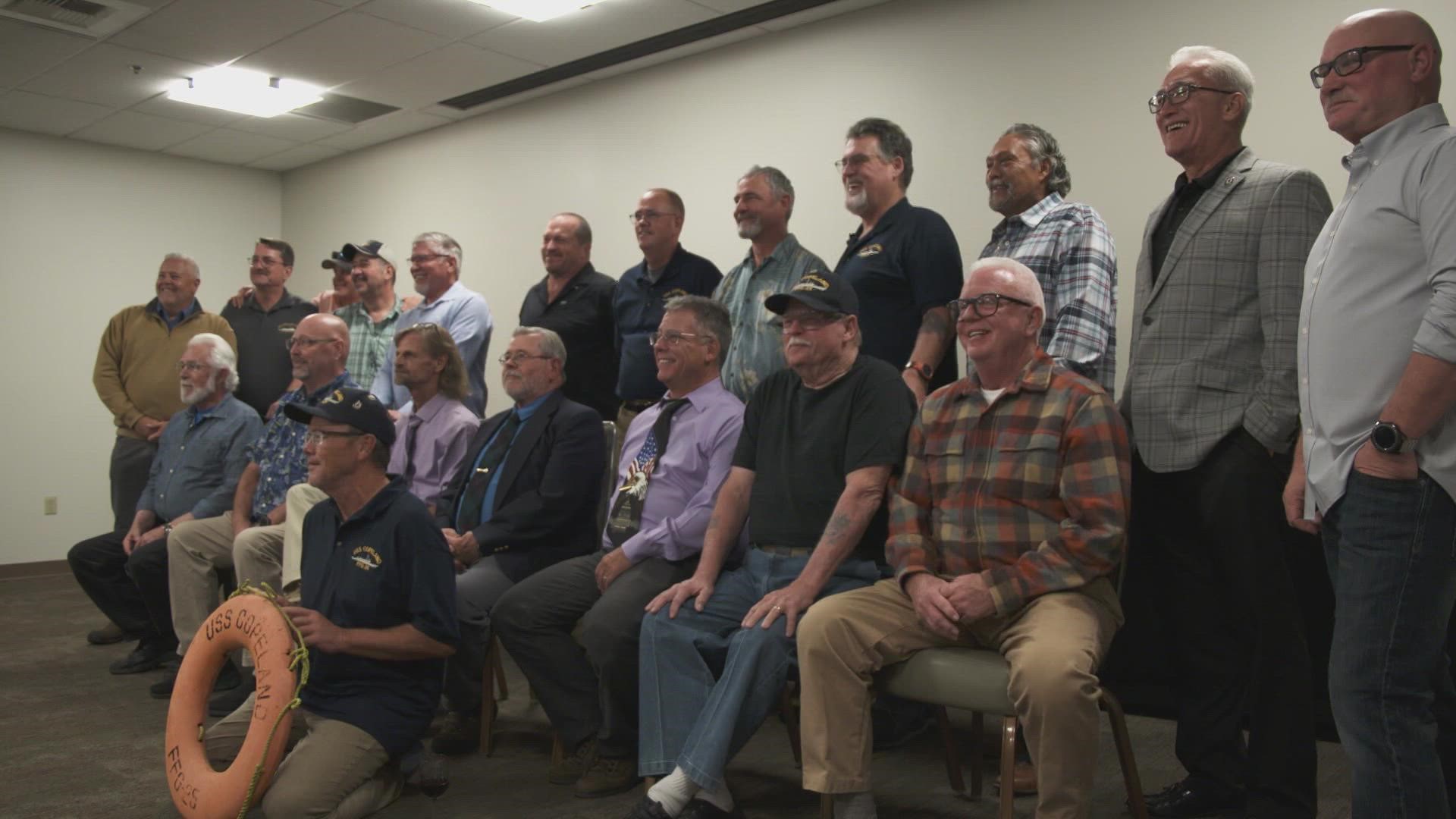BREMERTON, Wash. — The recent discovery of the USS Samuel B. Roberts, a small World War II destroyer escort sunk during an epic battle in the Philippines 78 years ago, has spurred long-told stories of bravery, patriotism, and the underdog.
It only seems fitting that the crew of the ship's namesake, the USS Copeland, would gather in Bremerton to talk about their bond and the crew of the Roberts.
The USS Samuel B. Roberts was affectionately called the Sammy B. The ship's only captain was a junior officer in the Navy Reserve from Tacoma, whose love of the Navy at a young age set the stage for 30 years of service.
Robert W. Copeland first graduated from Lincoln High School. He received his undergraduate degree from the College of Puget Sound, before attending law school at the University of Washington. While there, he simultaneously earned a naval commission through ROTC.
His picture is displayed prominently on the ROTC Wall of Fame. The tattered flag from his famous ship evokes curiosity.
In late October of 1944, the Japanese Navy launched a series of attacks against U.S. Navy ships protecting the Philippines as they tried to regain a strategic foothold in the Pacific it lost. The four-day endeavor, called the Battle of Leyte Gulf, was arguably the largest naval battle in history.
On the morning of Oct. 25, a small group of U.S. ships found themselves under surprise attack by the center force of the Japanese Navy. The force had nearly twice the ships and those were bigger, faster and had superior firepower. One -- battleship Yamato -- was the largest ever built and weighed more than all the U.S. ships in the battle combined.
The first contact came at about 6:50 a.m., as recounted by Copeland during a recorded interview. Moments later, an "object on the horizon was reported."
What happened next would be the subject of several books detailing the last stand of these so-called tin can sailors, with dedicated storylines to the Roberts, including, “Little Wolf at Leyte,” “For Crew and Country,” and Copeland’s personal account in “The Spirit of the Sammy B.”
A now-declassified action report tells the story. The U.S. ships could not outrun the Japanese fleet, so they turned and fought; charging the enemy for miles as they dodged incoming shells to get within torpedo range. After scoring a hit, the Roberts went toe to toe with two larger ships, at close range, damaging both before taking multiple hits that tore the ship's hull wide open.
At 9:10 a.m., the call was made to abandon ship. Less than an hour later the ship sank, going down in history as the destroyer escort that fought like a battleship.
Earlier this year, ocean explorer Victor Vescovo went in search of the Roberts’ final resting place in the Philippines - 22,621 feet below the surface. He and his team found 306 feet of mangled metal. It was the deepest shipwreck discovery in history.
Sailors aboard the Roberts that day earned high praise and high honors for their effort in fending off the Japanese fleet. Commander Copeland was awarded the Navy Cross for his valor, among other unit citations. After attending the Navy War College to further his education, he returned to Tacoma where he served in the navy reserve until retiring in 1965 as a rear admiral.
In 1980, years after his death, the Navy launched a ship bearing his name.
KING 5 anchor Greg Copeland is the grandson of this navy hero. He was only 8 in 1980 when his grandmother helped christen the USS Copeland.
Now, with the discovery of the Roberts, Copeland is proud to share the story of his grandfather and so many other brave sailors during WWII.

